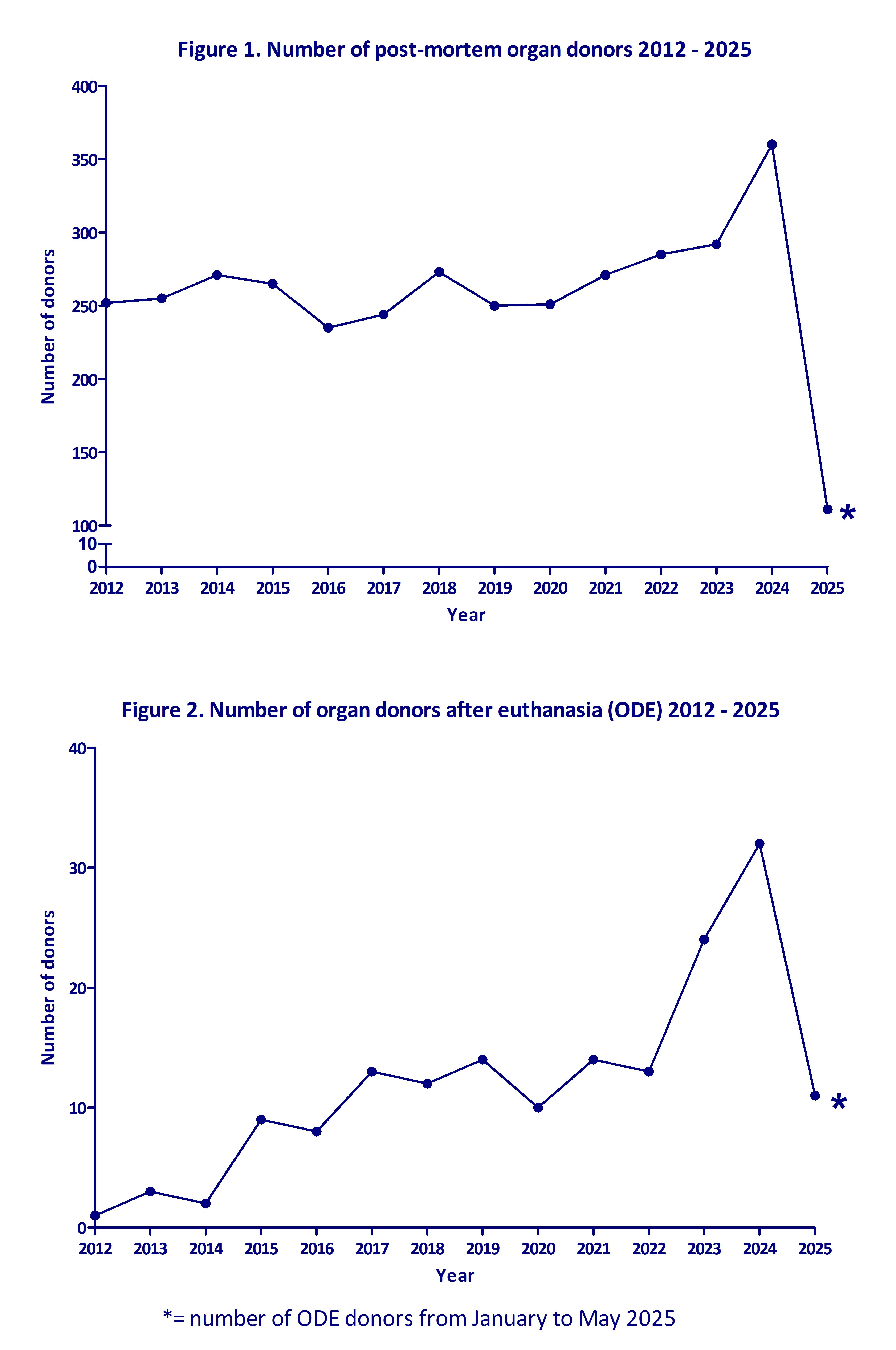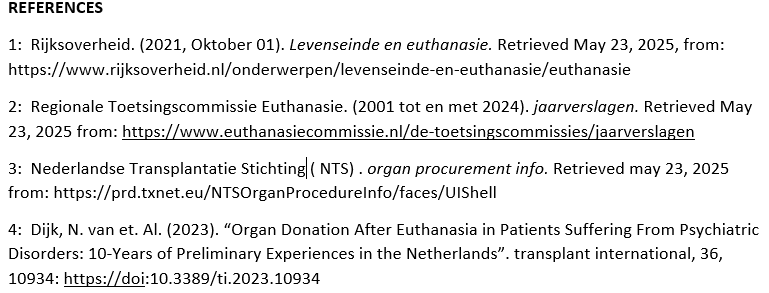Organ donation after euthanasia in the Netherlands, a summary of 12 years’ experience
Anna Banken-Vandewall3, Hanne Verberght3, Nichon Jansen1, Wim De Jongh3, Nathalie Van Dijk2, Walther Van Mook2.
1Dutch Transplant Foundation, Dutch Transplant Foundation, Leiden, Netherlands; 2Intensive care Medicine, Maastricht University Medical Center, Maastricht, Netherlands; 3Heart and Vascular center, Maastricht University Medical Center, Maastricht, Netherlands
Introduction: Since the legalisation of euthanasia in the Netherlands in 2001, provided that the conditions of the Euthanasia Act1 are fulfilled, the procedure has been performed approximately 110,000 times2. Data from the Regional Euthanasia Review Committee shows an increase in euthanasia cases due to psychiatric suffering since 20192.
Organ Donation after Euthanasia (ODE) is possible for patients experiencing unbearable suffering, whether due to somatic or psychiatric conditions, whose request for euthanasia has been approved and who wish to donate their organs. Patients with medical contraindications to donation are excluded.
The first ODE in the Netherlands was performed in 20123, involving a patient suffering from a neurodegenerative disorder. Since then, the number of requests for ODE has progressively increased. An increase in ODE due to psychiatric suffering has been observed since 20184.
Since 2012, it has been possible to donate lungs, liver, pancreas, and kidneys following euthanasia. Since 2021, heart donation has become feasible using the ‘heart-in-a-box’ method, further expanding the organ donation potential.
This abstract aims to provide an insight into the background of the ODE procedures.
Methods: Data on organ donation after euthanasia and transplantation between January 1st 2012 and May 1st 2025, were retrieved from the Dutch Transplant Foundation database. Data on euthanasia in the Netherlands between January 1st 2012 and January 1st 2025 was retrieved from the Regional Euthanasia Review Committee, which retrospectively reviews each euthanasia case.
Results: In the study period, 3615 post-mortem organ donations were performed in the Netherlands (Figure 1), of which 2,071 were classified as DCD-III3. Of all post-mortem donors, 166 (4.6%) were ODE procedures (Figure 2). While the overall proportion of ODE among post-mortem donations over this period annually averaged 4.7%, a notable increase has been observed in recent years: 8.2% in 2023, 9.7% in 2024, and reaching 10% in 2025 to date.
Of the 166 ODEs, 76 (46%) involved male donors and 90 (54%) female donors. 79 (47.5%) cases were based on somatic suffering, 73 (44.1%) on psychiatric suffering, and 14 (8.4%) cases were based on early-stage dementia3.
From these 166 ODEs, 39 (23.4%) hearts, 114 (68.7%) lungs, 110 (66.2%) livers, 31 (18.7%) pancreases and 304 (91,5%) kidneys were transplanted. 64 (38.6%) of the ODE patients also donated their tissue3.
Conclusion: Since 2012, the number of ODE patients has gradually increased, with a more pronounced rise in 2023, 2024, and 2025. Although ODE patients represent a relatively small subset of the donor pool, they constitute an increasingly significant contribution to donor potential. Furthermore, since 2018, a shift has been observed in the underlying indications for euthanasia, from primarily somatic to psychiatric conditions.

